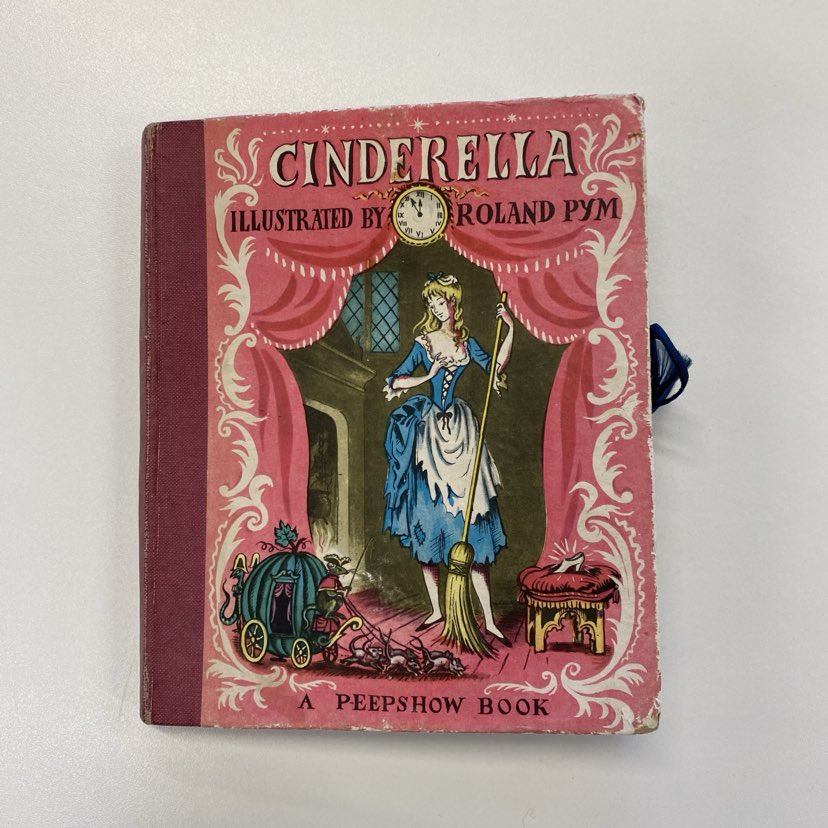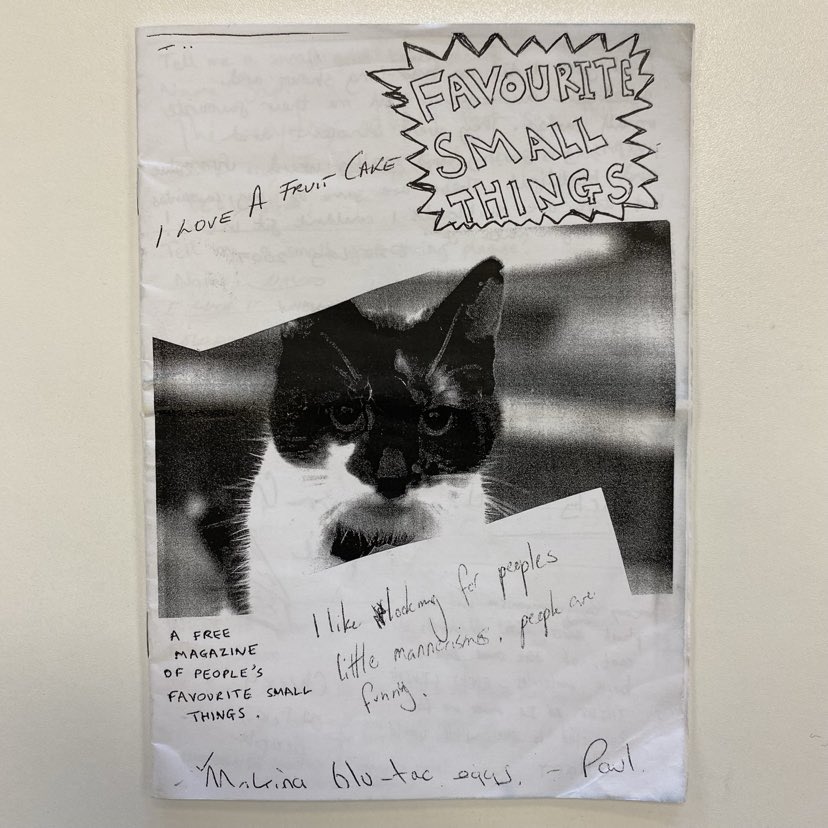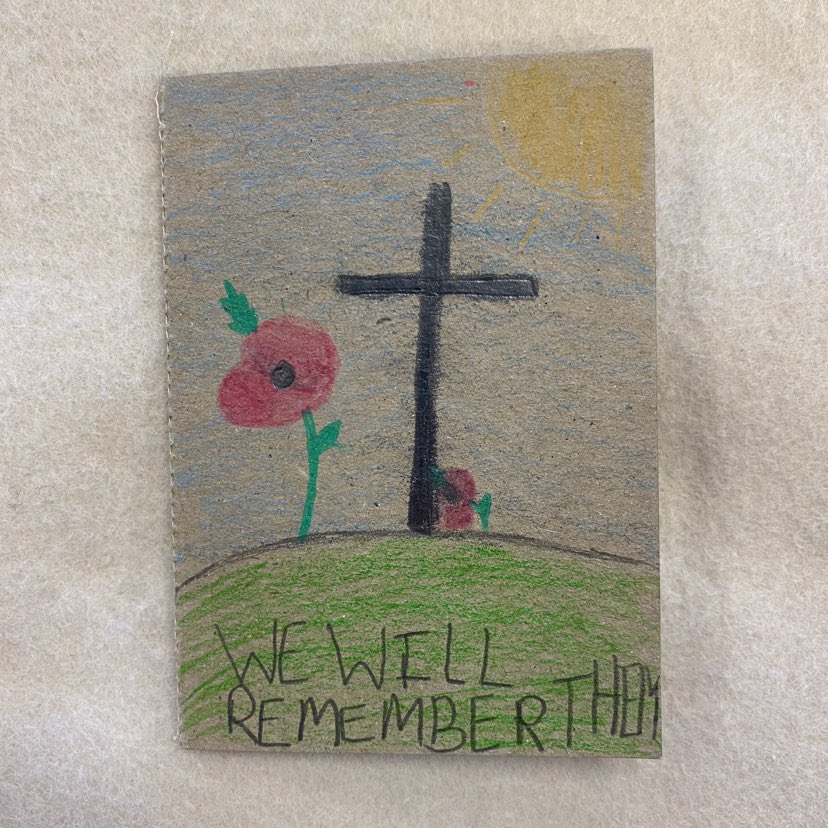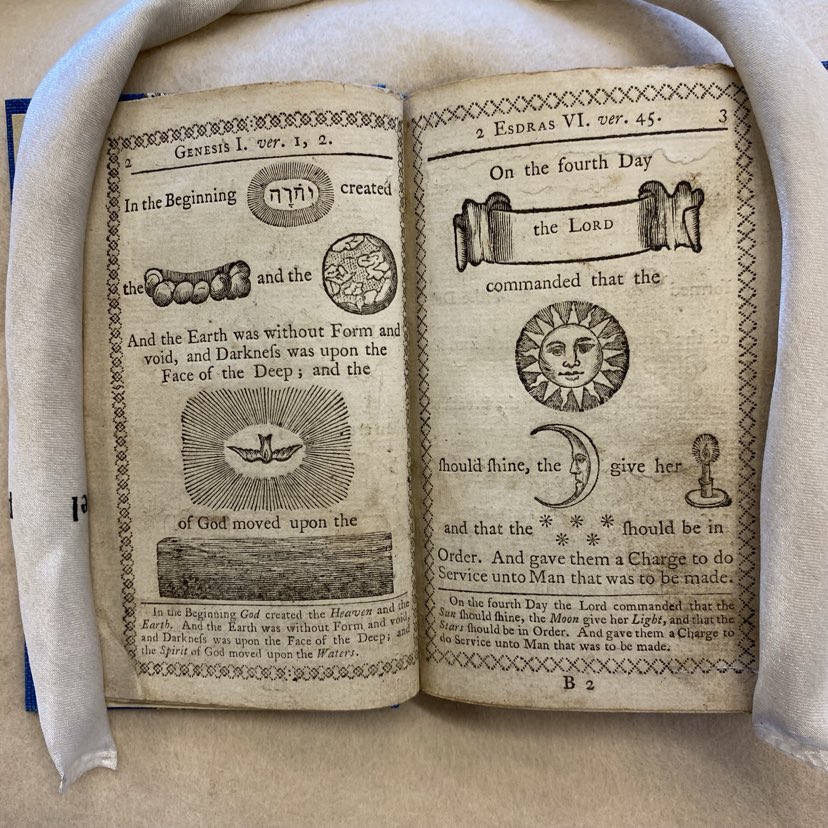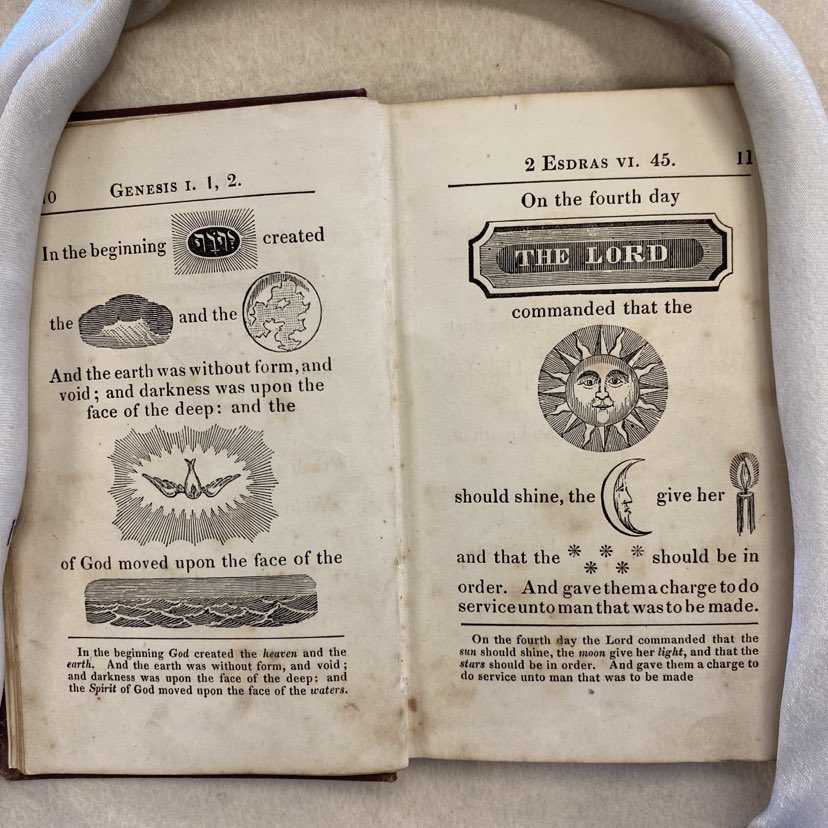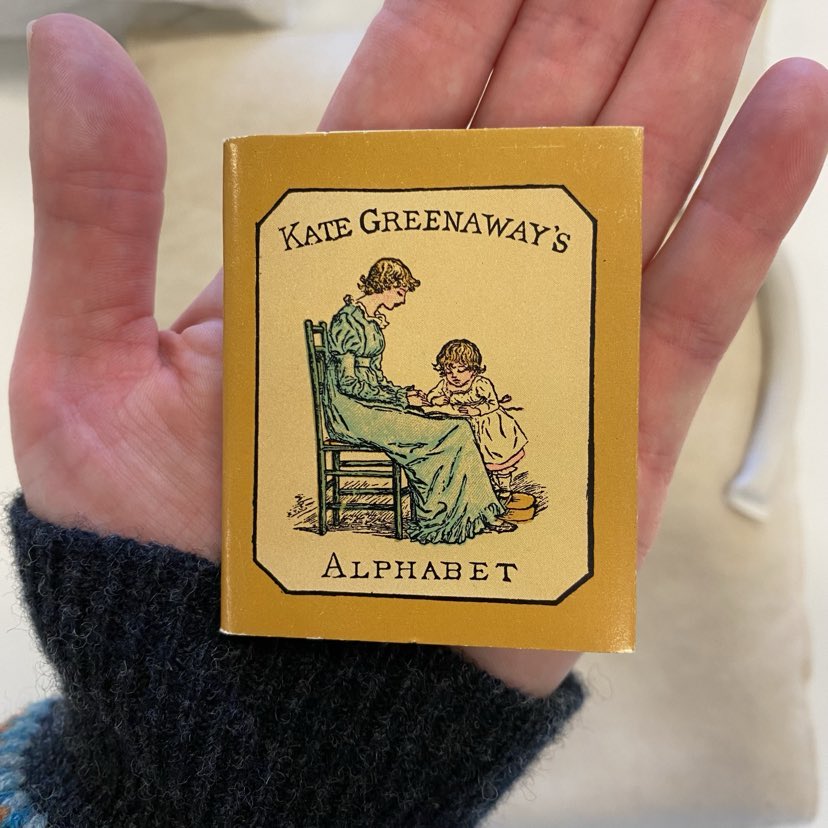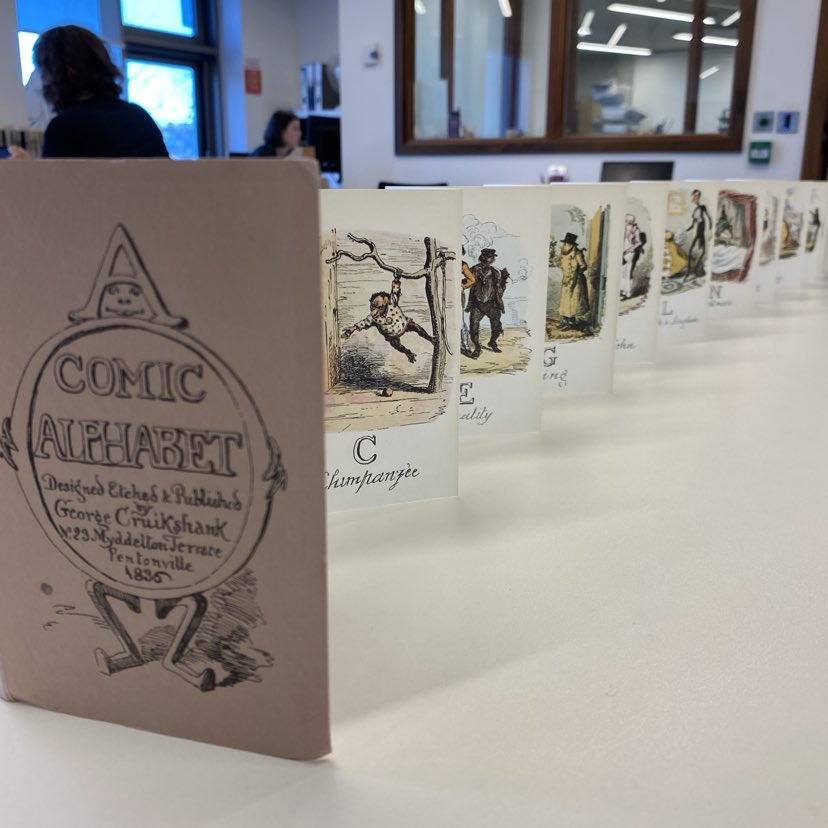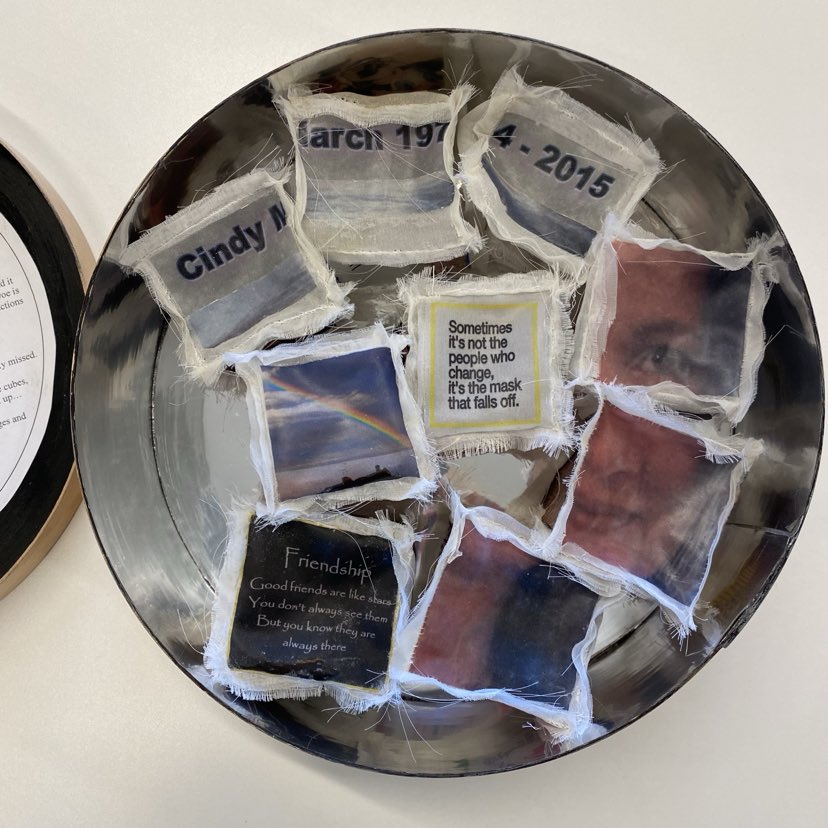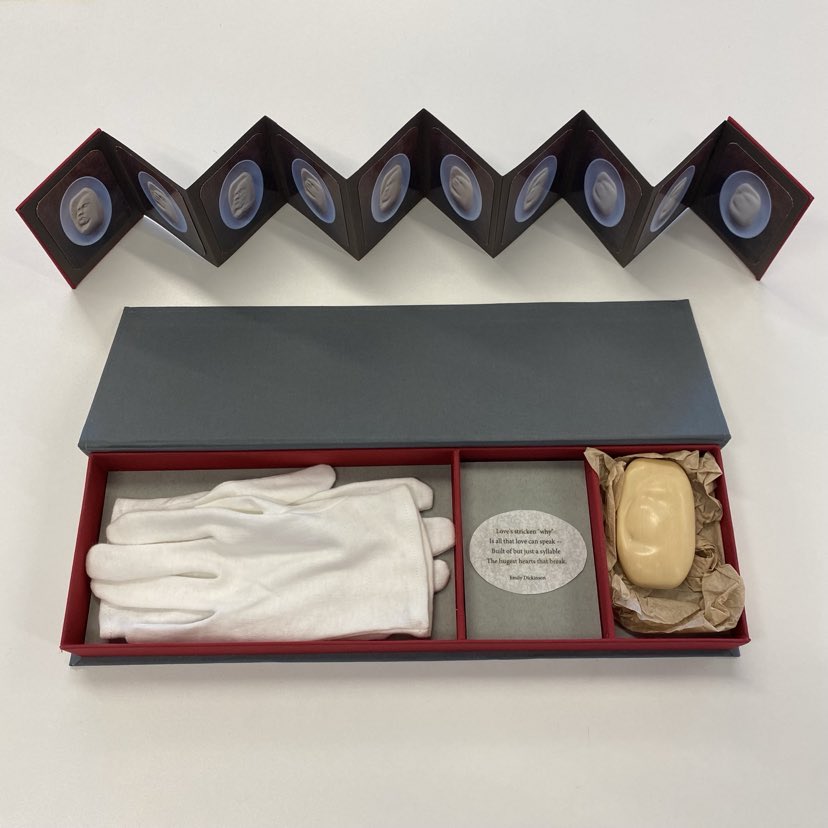On Saturday 25th November we had the fantastic opportunity to participate in another book-making workshop led by Dr Stella Bolaki at Discovery Planet, Ramsgate, and share our collections with the local community and reach audiences we wouldn’t usually reach, notably children. The day became a creative celebration of individuality as well as bringing people together, and we were able to showcase collections which spoke to these themes – read on for more details!
With the arrival of pantomime season, this was prime time to explore the story of Cinderella, the classic rags to riches fairytale, in which the heroine moves from a state of loneliness to a sphere of belonging, by virtue of her individuality. Poor Cinders, she is maligned and mistreated by her family, and is made to work like a servant. However, her isolation is also what sets her apart, for she is the only one whom the glass slipper fits, and she consequently becomes the one and only girl with whom the Prince falls in love. Perrault’s classic 17th-century tale has notable predecessors and has itself been adapted over and over across forms as diverse as ballet and animation. We are lucky in our David Drummond Pantomime Collection to hold a variety of story-book versions as well as programmes and theatre paraphernalia relating to Cinderella. I find it fascinating to trace the aesthetic development of theatre programmes through history, from the single folded sheet war-time programmes that insist the show will go on even during air raids to the activity-filled bumper programmes of the 1990s aimed to keep children entertained with wordsearches, quizzes and spot-the-difference puzzles. The undisputed star however, was Roland Pym’s illustrated peepshow book of Cinderella, a beautiful feat of paper engineering that relates the story theatrically via a series of popup scenes that the reader peeps into.
Another inspirational figure in our collections is undoubtedly Josie Long, who started performing stand up comedy at the age of sixteen and owned her own comedy club in Camden called ‘The Lost Treasures of the Black Heart’. Josie incorporated a lot of audience participation in her stand-up, which has resulted in an eclectic collection including t-shirts, teddy bears, and even a shrivelled orange! On one occasion she asked her audience to envisage themselves as super heroes, draw an accompanying portrait and list their special traits and catch phrases, rather in the manner of a Top Trumps card. This was a great way to celebrate individuality within a collective environment. Another way Josie did this was by gathering audience submissions on the theme ‘favourite small thing’ and subsequently binding these unique – sometimes peculiar – thoughts into a zine of multiple voices.
Similarly to Josie Long, Special Collections and Archives ran a collective project in 2018 with artist Dawn Cole, inviting individual submissions to participate in an act of national remembrance, on the occasion of the centenary celebrations of the Armistice. The submissions consisted of personal diaries about the individual’s day on 11 November 2018, many incorporating photographs, illustrations, collage and poetry. What I consider particularly special about the collection that ensued, is the capturing of children’s voices.
Having catalogued our Children’s Literature Collection this year, I have been fascinated by the way in which they differ from other books in terms of their intended audience. Whilst reading is usually an isolated activity, children’s books in particular seem intended to be read together. This is often how children first encounter stories (by having them read aloud) and how they learn to read (by reciting from the page to an adult). Illustrated books help children to follow a story before they can read and some books insert images or symbols into the text to act as prompts, for instance, our hieroglyphic Bibles. These examples date to 1786 and 1866 respectively, but remain almost identical in format, with an abridged text at the bottom of each page in order to supplement the hieroglyphic versions intended to support literacy and, obviously, spiritual development in the committing of key Biblical verses to memory.
Alphabet books also connect letters and sounds with pictures, and we are lucky to hold a variety of facsimile versions in Special Collections and Archives that also show the innovative forms books can take, from teeny-tiny treasures that fit in your palm to concertina books that fold out dramatically. These examples show the vastly different aesthetic styles that bookend the nineteenth century, from satirical caricaturist George Cruikshank to sentimental children’s book illustrator Kate Greenaway.
Of course the most innovative books that we hold are from our Prescriptions Artist Books Collection, which toy with the nature of what a book can be and how it can be read. From texts composed of textiles to scrolls wrapped around syringes, from manipulated books to feats of origametry, this collection forms artistic responses to physical and mental illness, and many deal with the emotion of loneliness and experience of isolation. Two particularly moving examples are Sally Chinea’s What do I do now you’r gone and Karen Apps’ Losing Touch, that speak respectively of grief and abandonment. Sally Chinea’s work of delicate voile cubes that piece together a portrait tells the story of a very personal friendship and constitutes a tribute to Cindy March who died of breast cancer in 2015. Karen Apps’ work is inspired by the Foundling Museum and documents the separation of mother and child, using a carved piece of soap as a metaphor for the erosion of that maternal bond. It also, like the story of Cinderella, celebrates the story of the orphan, and inspires us to consider how our individuality can become our strength.
Participants of the workshop were inspired by the collections to create their own books using a variety of techniques, from folding to stitching, and were brought together by crafting. They had the opportunity to create stories envisioning themselves as heroes, and many used the workshop to create a book as a gift for someone else. It is through these acts of self-empowerment and generosity that the workshop thus fulfilled its objective, and combatted isolation and loneliness in a genuine and hands on way.

